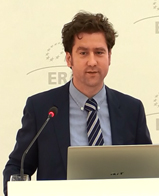Introduction
General features
Multilateral environmental agreement through which the opportunities for citizens to access environmental information are increased.
It is a way of enhancing the environmental governance network, introducing a reactive and trustworthy relationship between civil society and governments and adding the novelty of a mechanism created to empower the value of public participation in the decision making process and guarantee access to justice.
Access to information, public participation in decision-making and access to justice refer to numerous contexts, data, procedures and matters. The 1992 Rio Declaration sets the policy direction for public participation as a part of environmental governance, but it does not specify – nor exclude – any particular form of environmental decision-making for public participation. Nor does it provide any minimum standard for such participation or design the processes.

The support for the three “pillars” takes different forms in different environmental agreements: geographically, in the degree of details and ambitions, and in the scope of procedural issues provided for. The close connection between access to information and public participation is revealed in the jurisprudence of human rights bodies.
The European Court of Human Rights, the Inter-American Commission on Human Rights, and the African Commission on Human and Peoples’ Rights all make links between these two issues.

Some environmental agreements somehow support the general notion that members of the public should be informed, be able to make their own views and, in some treaties, be able to express these views in decision-making processes. Other environmental agreements with global reach that approve access to information and public participation in decision-making aim at improving public awareness about environmental problems and public engagement and participation in these fields. Others go even further and actually oblige the parties to ensure
public access to information and public participation in matters covered by the agreements.

For the presentation on "Aarhus Convention and the EU: Latest developments" see:

